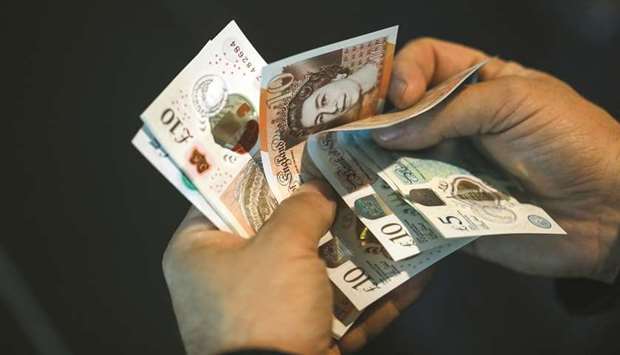Sterling volatility is getting a shake-up as the risk of the UK crashing out of the European Union grows. Measures of expected pound swings over the next three and six months, covering the run-up to and the aftermath of the October 31 Brexit deadline, have surged to the highest among Group-of-10 currencies. The gauges may still climb, being well short of the levels ahead of the original March deadline.
UK Brexit Secretary Steve Barclay said no-deal risks are “underpriced,” while the EU’s chief negotiator Michel Barnier said the UK would “have to face the consequences” under such a scenario.
The pound is bucking a trend of almost unprecedentedly low volatility in the multi-trillion-dollar-a-day market for foreign exchange, as it mirrors the twists and turns of the Brexit saga. Bets on swings are more in line with emerging-market currencies such as the Mexican peso and Brazilian real, given the myriad of political risks that could drive a sharp move.
“With the October 31 deadline about to enter the three-month expiry window, the options market is pricing in the expectation of higher and higher volatility ahead of that expected cliff-edge,” said Ned Rumpeltin, the European head of currency research at Toronto Dominion Bank. While the pound climbed on Thursday, the currency and its volatility had been in decline since Prime Minister Theresa May announced her resignation as party leader in May following her failure to get a deal with Brussels through Parliament.
Both prime ministerial contenders Boris Johnson and Jeremy Hunthave said they would take the UK out of the bloc if no deal could be reached, and this week toughened their rhetoric.
Three-month implied sterling-dollar volatility touched 8.75% Thursday, the highest since April. The six-month gauge was at 9.15%, nearly 200 basis points above the year’s low. By contrast JPMorgan’s Global FX Volatility Index is hovering near record lows.
Given what’s at stake if Britain broke away without a deal, sterling volatility ought to be much higher according to Esther Reichelt, a currency strategist at Commerzbank AG.
Reichelt pointed to the surge in volatility in the run up to the Brexit deadline of March 29 when a similar gauge jumped to an 18-month high.
“That shows that the majority of market participants is speculating on a further extension – and most likely further negotiations, which could push the actual decision on what kind of Brexit to expect further into the future,” Reichelt said.
“The market does still see predominant pound-idiosyncratic risks but in my opinion might still be too optimistic about how these risks will eventually play out.”

A man holds pound banknotes in an arranged photograph in London. The pound is bucking a trend of almost unprecedentedly low volatility in the multi-trillion-dollar-a-day market for foreign exchange, as it mirrors the twists and turns of the Brexit saga.
